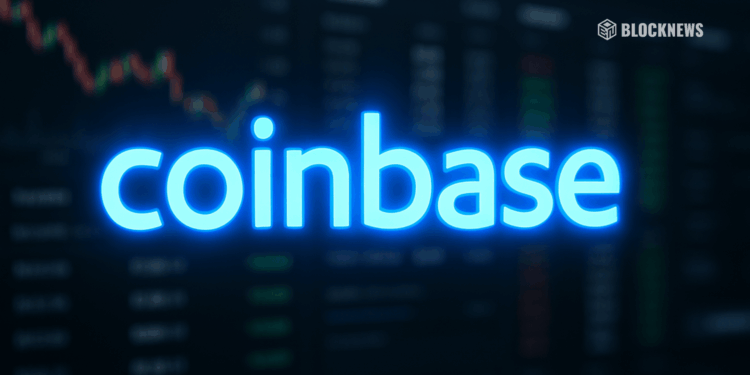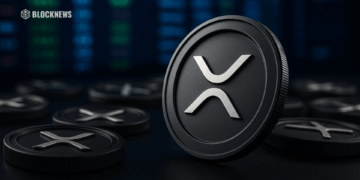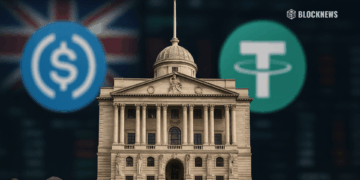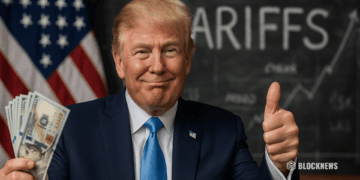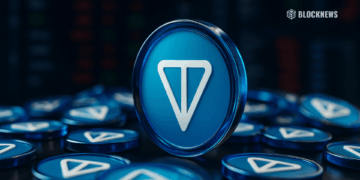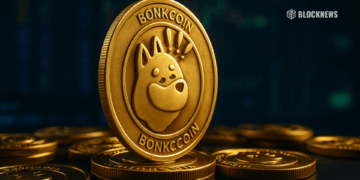- Coinbase is launching a curated token sale platform with one sale per month and algorithmic allocation instead of first-come, first-served rushes.
- Participation requires KYC-verified users paying in USDC, with project teams locked from selling tokens for at least six months.
- The platform is designed as a reset of the ICO model, adding vetting and safeguards while keeping public access to early-stage crypto projects.
Coinbase (COIN) is rolling out a new token sale platform that aims to bring structure and safeguards to public crypto offerings, directly addressing many of the issues that defined the chaotic 2017–2018 ICO boom. Instead of open, frantic launches and first-come, first-served scrambles, Coinbase is introducing a curated, rules-based system designed to make token sales feel more orderly, fair, and institution-friendly.

How the New Token Sale Platform Works
According to a Monday press release, the new platform will host roughly one token sale per month. Each sale will run on a one-week request window, during which investors submit purchase requests rather than racing to be first in line. Once that window closes, an algorithm determines how tokens are distributed, with Coinbase describing the allocation as “broad and equitable,” reducing the advantage of bots or ultra-fast traders.
The first project using the platform will be Monad, a layer-1 blockchain startup set to launch its initial offering next week. This debut sale will effectively serve as the test case for how the new model performs under real demand.
Eligibility, Access, and USDC-Only Payments
Participation in these sales is gated through Coinbase’s existing compliance and identity framework. Buyers will need to use Circle’s USDC stablecoin to make their purchases, keeping settlement simple and on-chain. Only users in good standing who have completed identity verification and passed compliance checks will be able to take part.
The platform will be available to users in most global regions at launch, with Coinbase planning to expand access over time as regulatory clarity and infrastructure allow. The structure is clearly aimed at giving both retail and institutional investors a familiar, regulated environment for early-stage token exposure.
Guardrails to Avoid Another ICO-Style Meltdown
In a clear nod to the failures of the last ICO cycle, Coinbase has hard-coded several investor protection rules into the framework. Project teams and affiliated insiders will be blocked from selling any of their tokens for at least six months after the public sale. This restriction applies to both privately allocated tokens and those obtained via exchange-based sales, reducing the risk of immediate insider dumping.
Coinbase will also vet projects before listing them. The review process will look at user demand, the founding team’s track record, and the underlying token structure, including how tokens are distributed, vested, and locked up. The idea is to filter out low-effort or purely speculative projects and prioritize those with credible teams and more sustainable designs.
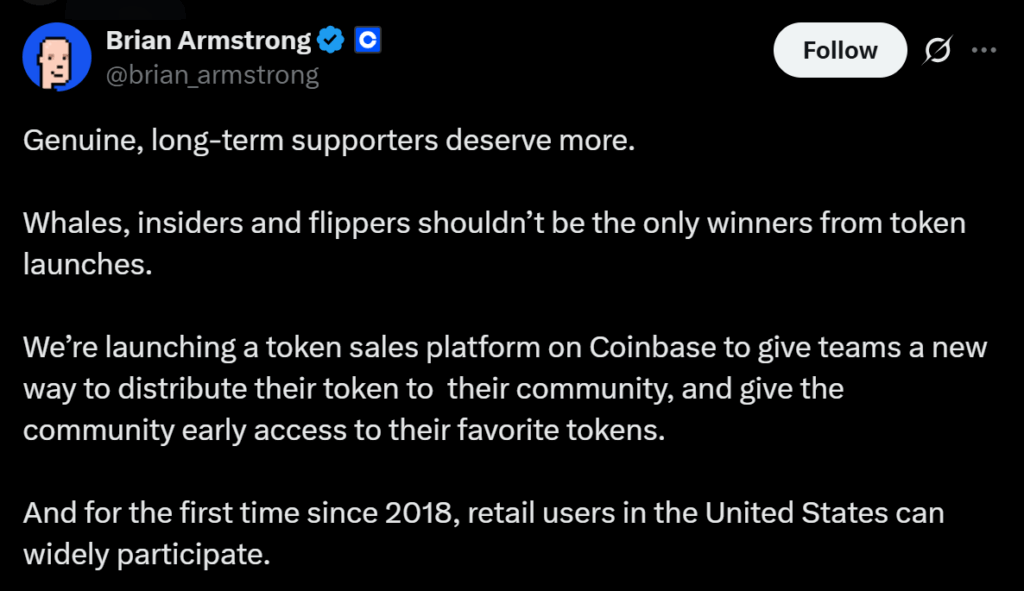
Learning From the ICO Boom and Bust
Back in 2017 and 2018, ICOs raised billions from the public, often with little more than a white paper and an ambitious roadmap. Some projects matured into real networks, but many fizzled or were exposed as outright frauds, drawing intense regulatory scrutiny and burning countless retail investors. That fallout pushed platforms like Coinbase to avoid ICO-style launches entirely for years.
This new approach represents an attempt to reboot public token sales, but with automation, stricter guardrails, and a higher bar for listing. By combining algorithmic allocation, USDC-based settlement, and enforced lockups, Coinbase is trying to capture the upside of public access while minimizing the worst excesses of the old ICO era.
A Potential Blueprint for Regulated Token Launches
If successful, Coinbase’s model could become a new standard for early-stage crypto fundraising: closer to a structured offering than a speculative free-for-all, but still accessible to a broad base of users. The hope is that a platform like this can satisfy regulators, attract serious projects, and give investors clearer expectations about risk and protections.
Ultimately, Coinbase is betting that the demand for public participation in token launches never really disappeared—it just needed a safer, more mature framework. This new platform is their attempt to provide exactly that.


